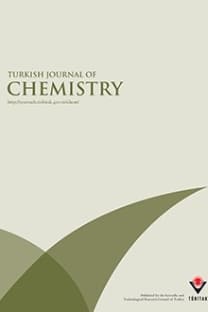Optimization of LiFePO4 synthesis by hydrothermal method
LiFePO4, Li-ion, battery, cathode, carbon coating
Optimization of LiFePO4 synthesis by hydrothermal method
LiFePO4, Li-ion, battery, cathode, carbon coating,
___
- Jugovic, D.; Uskokovic, D. J. Power Sources 2009, 190, 538–544.
- Aimable, A.; Aymes, D.; Bernard, F.; Le Cras, F. Solid State Ionics 2009, 180, 861–866.
- Yun, N. J.; Ha, H. W.; Jeong, K. H.; Park, H. Y.; Kim, K. J. Power Sources 2006, 160, 1361–1368.
- Wang, J.; Sun, X. Energy Environ. Sci. 2012, 5, 5163–5185.
- Zhang, Q.; Wang, S.; Zhou, Z.; Ma, G.; Jiang, W.; Guo, X.; Zhao, S. Solid State Ionics 2011, 191, 40–44.
- Goktepe, H.; Sahan, H.; Ulgen, A.; Patat, S. J. Mater. Sci. Technol. 2011, 27, 861–864.
- Qingzhu, S.; Xiuqin, O.; Li, W.; Guangchuan, L.; Zuorui,W. Mater. Res. Bull. 2011, 46, 1398–1402.
- Zhang, Y.; Huo, Q.; Du, P.; Wang, L.; Zhang, A.; Song, Y.; Lv, Y.; Li, G. Synth. Met. 2012, 162, 1315–1326.
- Dokko, K.; Koizumi, S.; Sharaishi, K.; Kanamura, K. J. Power Sources 2007, 165, 656–659.
- Chen, J.; Whittingham, M. S. Electrochem. Commun. 2006, 8, 855–858.
- Chen, J.; Wang, S.; Whittingham, M. S. J. Power Sources 2007, 174, 442–448.
- Goktepe, H.; Sahan, H.; Kilic, F.; Patat, S. Ionics 2010, 16, 203–208.
- Liu, J.; Jiang, R.; Wang, X.; Huang, T.; Yu, A. J. Power Sources 2009, 194, 536–540.
- McKenzie, B. F. Org. Synth. 1929, 9, 50.
- Demir-Cakan, R.; Baccile, N.; Antonietti, M.; Titirici, M. M. Chem. Mater. 2009, 21, 484–490.
- Demir-Cakan, R.; Makowski, P.; Antonietti, M.; Goettmann, F.; Titirici, M. M. Catal. Today 2010, 150, 115–118. Shu, H.; Wang, X.; Wu, Q.; Liu, L.; Liang, Q.; Yang, S.; Ju, B.; Yang, X.; Zhang, X.; Wang, Y. et al. Electrochim. Acta 2012, 76, 120–129.
- Yun, N. J.; Ha, H. W.; Jeong, K. H.; Park, H. J.; Kim, K. J. Power Sources 2006, 160, 1361–1368.
- Qingzhu, S.; Xiuqin, O.; Li, W.; Guangchuan, L.; Zuorui, W. Mater. Res. Bull. 2011, 46, 1398–1402.
- Yu, F.; Zhang, J.; Yang, Y.; Song, G. Electrochim. Acta 2009, 54, 7389–7395.
- Gaberscek, M.; Dominko, R.; Jamnik, J. Electrochem. Commun. 2007, 9, 2778–2783.
- Avci, E.; Mazman, M.; Uzun, D.; Bi¸ cer, E.; S ¸ener, T. J. Power Sources 2013, 240, 328–337.
- Uzun, D.; Do˘ grus¨ oz, M.; Mazman, M.; Bi¸ cer, E.; Avci, E.; S ¸ener, T.; Kaypmaz, T. C.; Demir-Cakan, R. Solid State Ionics. 2013, 249–250, 171–176.
- ISSN: 1300-0527
- Yayın Aralığı: 6
- Yayıncı: TÜBİTAK
Said SALIH, Ahmed GAD-ALLAH, Ashraf ABD EL-WAHAB, Hamid ABD EL-RAHMAN
Hira KHALID, Aziz Ur REHMAN, Muhammad Athar ABBASI
Fluorescence quenching study of moxifloxacin interaction with calf thymus DNA
Yun-kai LV, Pan LI, Miao-lun JIAO, Bao-sheng LIU, Chao YANG
Optimization of LiFePO4 synthesis by hydrothermal method
Muhsin MAZMAN, Ömür ÇUHADAR, Davut UZUN, Ercan AVCI
Aamer SAEED, Shams-ul MAHMOOD, Ulrich FLÖRKE
Marcos Roberto Abreu ALVES, Luciano Sindra VIRTUOSO
Asen KOLEV, Magdalena MITKOVA, Stefan KOTOV, Encho BALBOLOV
